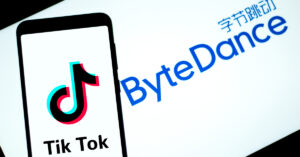
Growth marketing
(TC+) 3 experiments for early-stage founders seeking product-market fit: Elise King, director of Human Ventures’ entrepreneur-in-residence program and member of the firm’s investment team, spoke with founders and tells us about finding product-market fit.
Tackling touchpoints on your customer’s path to purchase: Returning contributor Jonathan Martinez shares his thoughts about using segmentation and retargeting to boost conversions:
There are myriad resources that can help you extract valuable insights and knowledge. One of my favorites is the Facebook Ad Library, which is a repository of all the platform’s ads that are currently live. This library not only provides you with competitor intel — it also has valuable intel about others in the same verticals or brands who are simply running a great performance marketing program. Another gold mine is an email repository called Really Good Emails.
(TC+) 11 ways to make personalized shopping more effective and profitable: E-commerce platforms should use every signal they can detect to triangulate shoppers along the customer journey, writes Vitaly Alexandrov, founder and CEO of Food Rocket.
Alexandrov takes us on a deep dive of the online shopping space, sharing marketing tactics and data insights that make mundane shopping experiences more memorable.
“There is no longer a question of whether or not you should offer personalized digital experiences. Anything less is a death knell to your brand’s long-term success.”
Software consulting
(TC+) How should nontechnical founders collaborate with software developers? As we mentioned in our last roundup, I interviewed the CEO of Wolfpack Digital, Georgina “Gina” Lupu Florian.
Can you describe the intake process for new clients? How do you assess their requirements, and what information do you need before you can share timelines and budgets?
The intake process can vary a lot depending on the particularities of each project and collaboration. We typically assess the information provided by our clients and put together a proposal that we refine afterwards with the client as we discover more about the product along the way.
To get to a robust estimated project timeline and budget, we consider user stories, wireframes, and/or a requirements document as the perfect starting point. We can either collect them directly from our clients (if they have them ready after attending incubators, etc.), or we can help with putting them together and join a discovery phase, which typically takes from a few hours to a few days. From the moment we have enough information to prepare a proposal, it usually takes less than a week to deliver it.










